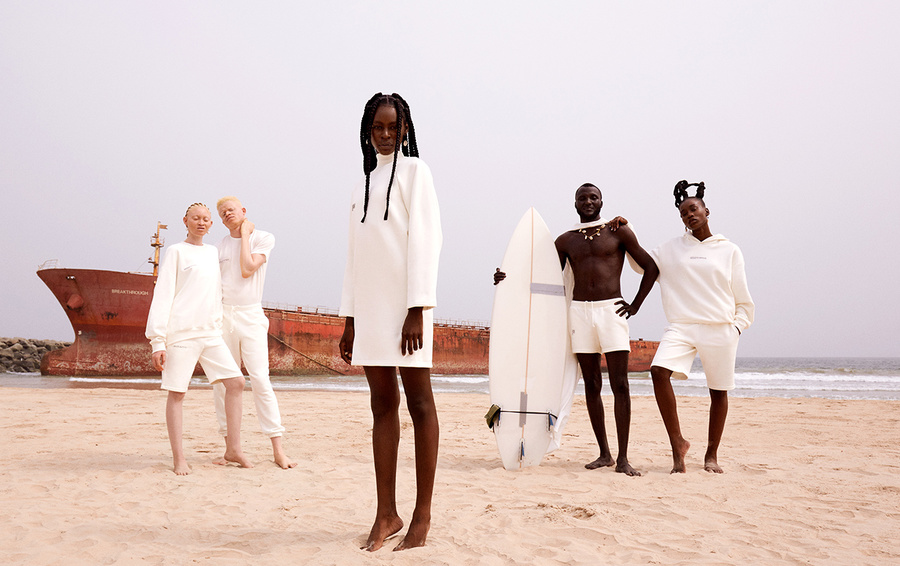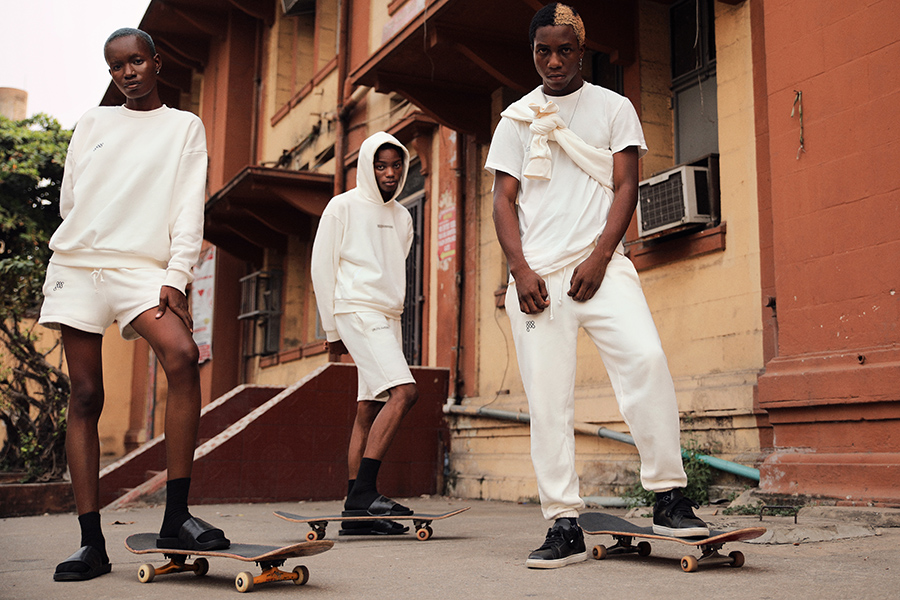Fashion causes significant environmental damage to the planet. Let’s get to know what local and global brands are doing about it and what problems sustainability solves, according to Forbes Life.
What is sustainability
The world started talking seriously about the harmful influence of humanity on nature in the second half of the 20th century. In 1972, at a conference in Stockholm, UN members raised the question of how population and production growth affect the state of the planet. 11 years later, in 1983, the World Commission on Environment and Development was convened. And four years later, its chairman, Gro Harlem Brundtland (concurrently Prime Minister of Norway), made a speech “Our Future,” where she first mentioned the word “sustainability.” It took a little more than 30 years for this concept to become one of the most critical news agendas from a term for a narrow group of people.
The thing is that sustainability is a multi-valued phenomenon, so the final wording sounds rather vague: “sustainable development.”
Sustainable development encompasses all aspects of ethical business conduct. There are three of them: environmental, social, and economical. First, everything is more or less clear: companies are responsible for the carbon footprint, the amount of water consumed, and the amount of waste.
By the way, in terms of the volume of plastic that enters the oceans, the fashion industry really takes the second place – after household waste.
The social factor implies timely payment and adequate working conditions. Because of this, e.g., it is challenging to call sustainable large brands with a big supply chain: there are few brands taking responsibility for contractors and even more subcontractors (that can be numerous). For example, the conglomerate Inditex was accused of unethical behavior when buyers of Zara items began to find tags on their items that stated: “I sewed the thing you are going to buy, but I was not paid for it.” The economic aspect is even more global – new jobs should be established, and the general welfare of the population should grow.

Pangaia
An ambiguous approach
Unfortunately, there is still no single answer to the question of how to save the planet. Because of this, the approach to sustainable development also varies. Fur manufacturers, for example, are arguing with animal rights activists. The main argument of the second is that fur is too cruel to animals. But the former disagree with them: there are too many refined products left from the production of artificial fur, which, in turn, pollute the environment. There are also problems with organic cotton: although pesticides are not used for its production, and the volume of water consumed is significantly lower, the total cost of goods is much higher.
“Greenwashing” refers to the unfair exploitation of a sustainable agenda.
Despite the loud statements of millennials who advocate a “green” philosophy, not everyone is ready to vote for the environment with a wallet. Fortunately, manufacturers understand this and strive to reduce the cost of goods without compromising ethics. For example, the son of Natalia Vodianova – Lucas Portman – launched his own brand of Fashion Baby sneakers in April 2021. Shoes are made in Portugal, while trimmings from leather goods factories in Italy are used to create sneakers. Lucas himself, who acts as a designer, as CEO, and as the main (after his mother) brand ambassador, says that the cost of products will only fall: while for a pair of sneakers with a butterfly on the sole, you will have to pay not too democratic € 330.
A separate item on the agenda is overproduction. Stocked goods in the warehouse hit the economy: according to McKinsey, after the pandemic, the total cost of unsold clothing and footwear is $168-192 billion, which is twice as much as in 2019. At the same time, the mass market is in no hurry to slow down: collections in stores are still updated several times a season. What happens to the leftovers is a big question. At best, things can go to charity, second-hand shops, or recycling; at worst – they will be burned (this is increasingly being fought at the state level, for example, in France). Brands like H&M tend to structure their work in a cyclical economy – e.g., they take things for recycling. Actually, in an ideal world, humanity produces precisely as much as it needs. But, alas, such a model is available only to small local brands. For example, NNedre residents of St. Petersburg produce things in small batches and tailor clothes depending on demand. But it is, instead, a luxury that is permissible in two cases: either when the delivery of goods is not tied to complex logistics or when the brand initially chooses the model of deliberate scarcity. This is what Supreme, for example, does. Moreover, James Jebbia, the founder of the skate brand, was not thinking about sustainable development at all but about the lack of space to store unsold things.

Pangaia
Who is on the good side?
For many marketers, the green fashion trend has become a gold mine. The term “greenwashing” has even appeared, which denotes the unfair exploitation of a “sustainable” agenda. It is not always easy for the average consumer to distinguish greenwashing due to many terms and an opaque communication system. Organizations that set production standards come to the rescue. A good example is the GOTS (Global Organic Textile Standard) certification. The organization that issues it confirms that the brand actually makes products from organic cotton. Moreover, the organic label will differ from the made with organic label – in the first case, you can be sure that 95% of organic fiber was used for the production, and in the second, its content can be only 70%.
You can check how ethical a particular brand is on special sites, for example, Good On You. This method is suitable for those who care about all aspects of sustainable development in a complex. So, for example, Adidas received a rating on the site as Good (which means that the company scored 4 points out of 5), and Nike – It’s A Start (3 out of 5). The service evaluates the brand’s attitude to the environment, animals, and people. It should be borne in mind that one of the essential factors in the assessment is transparency – primarily communication. The more a company talks about its initiatives, supply chains, interactions with contractors, the more trust it will have.
A good example is set by the Pangaia brand, which Miroslava Duma launched. It became famous for its minimalistic tracksuits made from vegan materials. The company is seriously investing not only in promotion but also in the R&D segment. “We are bringing together MIT, Harvard, and Stanford alumni and designers from the world’s leading schools to bring together science and timeless design in our products.” Their fabrics can genuinely be called innovative – in this, they are not inferior to mastodons like Patagonia or Stone Island.
The fabrics are made from unexpected raw materials: the brand has patents for material from seaweed, filling for down jackets from wildflowers, biopolymers, and airgel, an alternative to natural leather from grape cake and organic cotton. In the case of grapes, the company, by the way, helps not only the fashion industry but also the agricultural sector (in particular, the Italian wine industry, otherwise the cake would go to the landfill). Moreover, activists cannot blame the brand for greenwashing: the company’s primary goal is to develop materials that will not be inferior in quality to the usual cotton. In an interview with Forbes Life, Pangaia representatives said that algae fiber retains the beneficial properties of raw materials. It absorbs moisture well, does not cause irritation on the skin, and even, on the contrary, can have a slight healing effect – for example, reduce irritation. Dyes are also obtained from natural ingredients – fruits, vegetables, and other plants. There are enough requirements for paint: it should be non-toxic, biodegradable, and less water should be spent on production.

Pangaia
Pangaia also has a problem with an excess of things. “The demand dictates the volume of our production. Our goal is to free the planet both from the garbage in landfills and from the smoke generated when things are burned. We can significantly reduce our carbon footprint by making only the number of things we need. Limited drops work not only and not so much as an economic model. We are consciously approaching production, constantly analyzing data and improving the system.”You may read about global supply chains that buckle as COVID-19 variants and disasters strike here.



